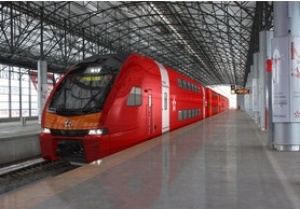WTTC Global Summit 2015: European tourism growth threatened by poor infrastructure planning

Tourism growth in many European countries is threatened by poor infrastructure quality, capacity and long-term planning, according to a report published today by the World Travel & Tourism Council.
The report ‘European Travel & Tourism: Where are the greatest current and future investment needs,’ published at the WTTC Global Summit in Madrid, reveals that, despite €2.1 trillion of forecast investment in the next decade, the growth of the sector in many countries is threatened by poor existing infrastructure quality or capacity or inadequate future investment.
Of the 41 European countries analysed in the report, Austria, Germany and the United Kingdom are the best placed over the next decade.
The tourism sector makes a substantial contribution to European economies.
In 2014, including its direct, indirect, and induced impacts, tourism supported 33.5 million jobs and made nearly €1.6 trillion in contribution to gross domestic product, or 9.3 per cent of total European GDP.
In addition, tourism is a key to recovery for countries hit hardest by recession and the Eurozone crisis, including Greece, Spain, and Portugal.
Tourism is forecast to grow as fast, if not faster, than the economy overall in every major European region, putting pressure on infrastructure capabilities and increasing the need for additional infrastructure investment.
This report shows that several countries could fail to achieve baseline forecasts for tourism GDP and jobs, and fall behind in global competitiveness terms, due to limited infrastructure and underinvestment relative to tourism demand.
The 41 European countries studied in this report are expected to invest €2.1 trillion in tourism between 2015 and 2025, which is five per cent of all forecasted European investment over the period.
The WTTC report uses three categories to identify country typologies, ranging from those that are at risk of losing tourism infrastructure competitiveness over the next decade, to those that are well-placed to benefit from forecasted investment spend between 2015 and 2025:
- Well-placed: This group of countries, exemplified by Austria, Germany and the United Kingdom, has high existing quality and capacity of tourism infrastructure which they are expected to maintain and improve between 2015 and 2025. With investment growth expected to outpace demand over that period, these countries are well-placed to capture the full benefits of forecasted Travel & Tourism demand.
- Well-placed, but with key risks: France, Italy, Switzerland, Ireland, and Greece are one set of countries included in this category. Each of them has existing tourism quality and capacity that is greater than the European average. Yet their strong positions are likely to deteriorate somewhat over the next decade, since tourism demand growth is forecast to outstrip tourism investment growth over the period.
- At medium or high risk: This category includes countries like Albania, Bosnia and Herzegovina, and Moldova, which are considered to be at high risk because they have the poorest existing infrastructure quality and capacity of the 41 countries studied in this report. Croatia, Serbia, and Slovakia are also considered at risk, because tourism investment growth is expected to lag behind demand growth over the next decade.
WTTC president David Scowsill said: “Tourism is one of Europe’s great sectors – it creates wealth and supports jobs and is a key to recovery for those countries hardest hit by recession and the Eurozone crisis.
“Our sectors is forecast to add five million jobs and $500 billion in GDP contributions over the next ten years with the sector due to grow as fast or faster than every European economy.
“However, the potential of our sector to create jobs, financial security and economic wealth can only be met with sufficient and effective investment to support this demand.
“Our research paints a picture of a diverse continent with some countries much better placed than others to capitalize on forecasted demand.
“This points to a need for smart investment, greater collaboration between public and private bodies, and creative funding options.
“Breaking down barriers to infrastructure development through the right business, political and regulatory frameworks will help to ensure that tourism in Europe maintains a strong and competitive position.”

